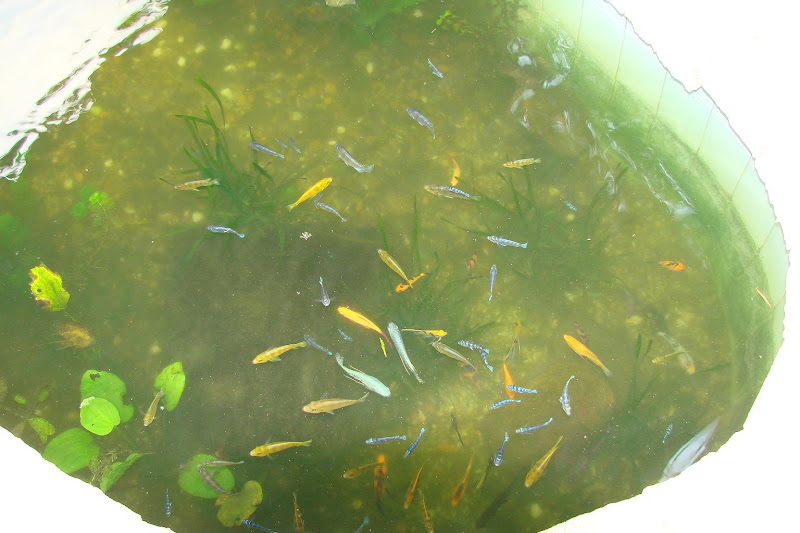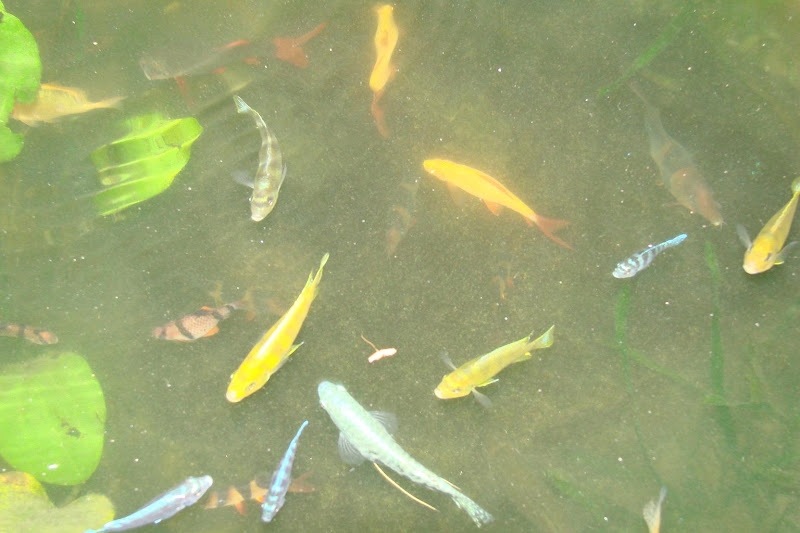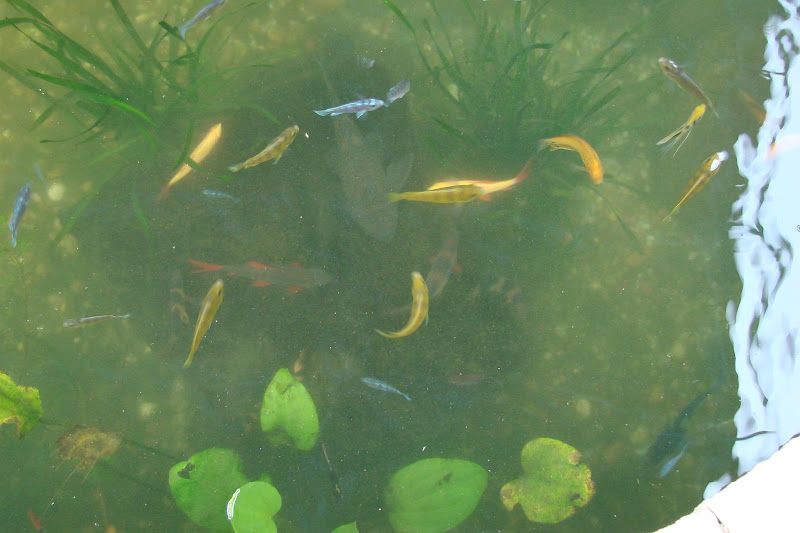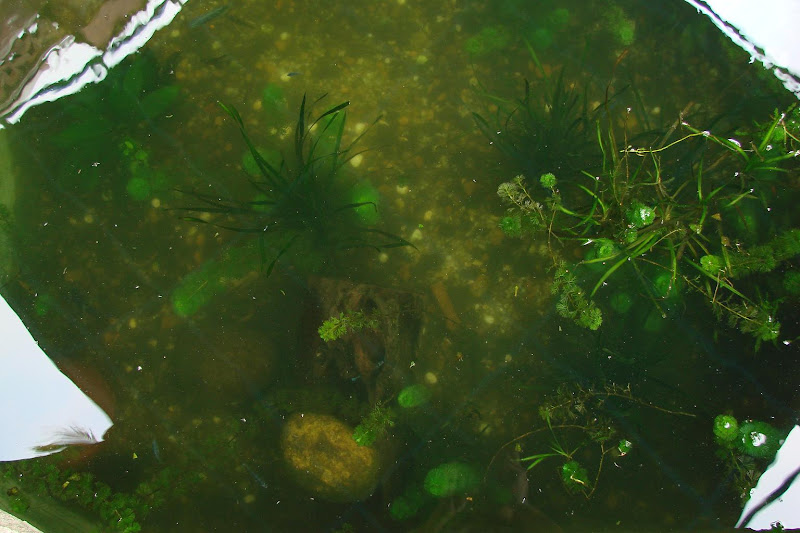rain water does flow through the lawn into the pond
Fertilizers from the garden are ending up in the pond and are part of the algae problem. Even if you are not fertilizing the garden very much (or at all) there are chemicals that are fertilizers from birds and animals that wander through, and the natural decomposing that happens in the soil as the garden plants live and die.
Circulating the water through a foam or sponge filter will remove a lot of the debris (fish waste, leftover food) but does little about chemicals dissolved in the water. Adding activated carbon to the filter will help to remove quite a long list of things that may be encouraging the algae, but I would start by barricading the pond from the garden so that no run off lands in the pond. Perhaps building the pond a few inches higher would be enough.
Air bubblers are not a very efficient way of moving water around. You would need a very large one to have enough of an impact on a large pond.
Have a look through the links suggested above. The most efficient way of getting water movement is to place a pump pretty close to the center, bottom of the pond and aim the water upward. The water does not have to fountain up and out of the pond, but should create some serious rippling of the water. What you are doing is taking the worst water (from the bottom, lowest oxygen because the fish and microorganisms have used it all) and bringing this up the the top of the pond where it will react with the air to get more oxygen into the water. The oxygen will benefit the fish and the decomposing organisms that are helping by breaking down the fish waste.
The problem with a pump at the bottom like this is that it can plug up with debris. If you put the pump in an open box that has sponges in it so the water flows through the sponges then the sponges will catch the debris. Then you will need to remove this filter set up from the pond occasionally to clean the sponges.
Look for a pump that says it can handle dirty water, and it will be less likely to plug up with debris.
Shade will slow the growth of algae. Get as many plants growing in the pond and near the pond as you can so the water is not exposed directly to the sun. Water lilies are good, taller plants that lean over the pond are good for shade, but may drop leaves into the pond. Live plants in the pond will also remove a lot of the chemicals the algae is using as fertilizer, leaving less for the algae.
If the fish destroy the plants then I would set up a pump that removes some water from the pond and dumps it into an upper pond or container that can grow plants, something fairly shallow, with a large surface area, and set it up so the water is returned to the pond with a water fall. A separate plant filter like this should be about 10% of the volume of the pond, and the water should circulate through it rather slowly, perhaps once per hour, or less (800 gallon pond, 80 gallon planted filter, 400 - 800 gallons per hour circulation) in this example an 80 gallon planted pond might be a foot to 18" deep, and around 2' x 4' length and width. Whatever size you can accommodate will be helpful, though.
I have a slightly more complex system than this:
250 gallon lower pond, 45 gallon upper pond and a stream between the two. The stream is heavily planted. The pond has small floating plants to shade it and reduce algae growth, as well as a lemon tree to the south side. (Northern hemisphere, sun comes from the south)





